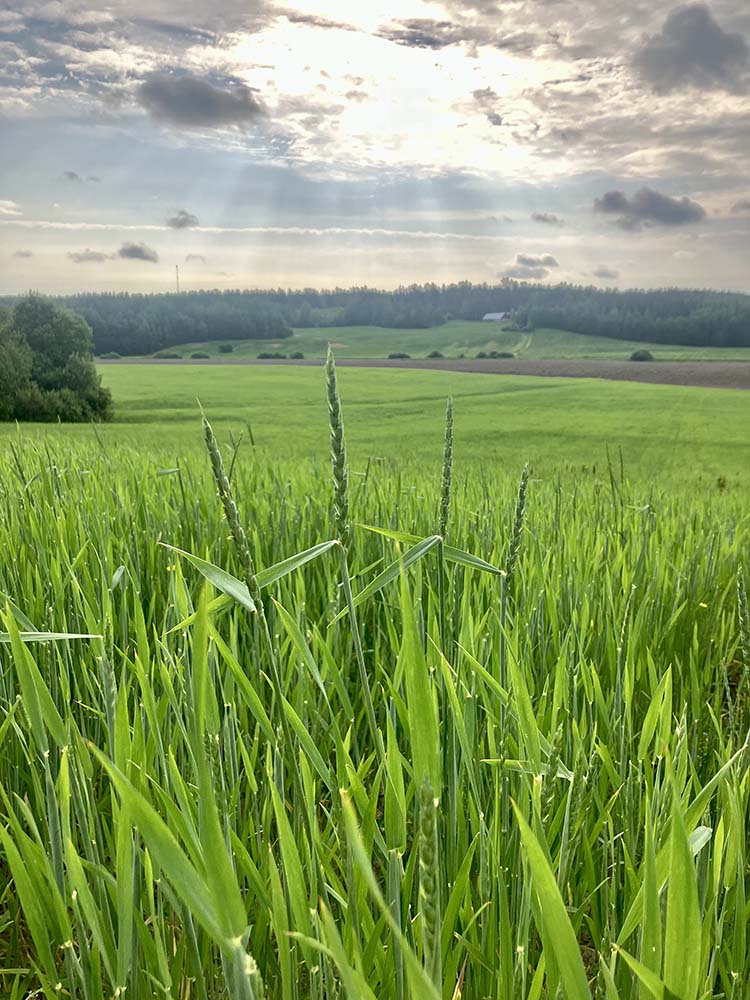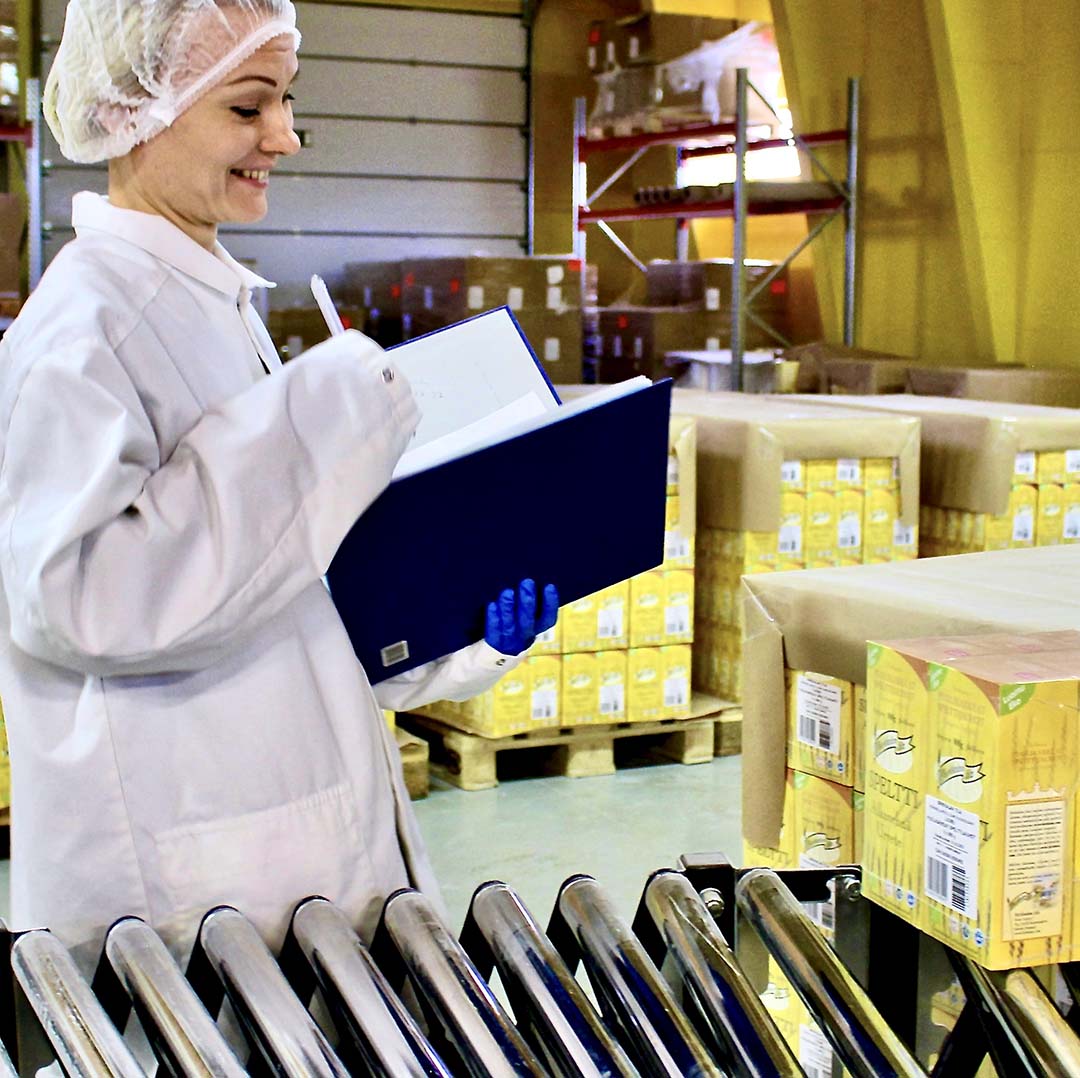
Organic spelt for the world

Spelt cultivation at Birkkala Farm started in 1993. Pirkko and Jaakko, the parents of the current landlord, Simo Larmo, were travelling in Germany and were able to become acquainted with spelt and treats made from spelt, which was almost unknown at the time in Finland. They brought back a kilo’s worth of spelt seeds.
It turned out that spelt cultivation can be successful also in Finland, and that’s how it all started.
Because Birkkala Farm is an organic farm, strong crop rotation forms the basis of a successful and good-quality spelt harvest. Birkkala uses a five-year crop rotation, in which each block has the following rotation: 2-year clover grass - spelt - broad bean - protective cereal (spelt crop under which new clover grass is planted). This crop rotation maintains the optimum nitrogen load of the field, keeps the weeds and plant diseases in check and the growing condition of the soil healthy.
The sowing time of spelt is normally between the end of August to mid-September. It is recommended to cultivate spelt on sloping blocks with good irrigation. The seeding amount is approx. 200 - 240 kg per hectare and spelt is sown with its spikelets to a depth of about 3 - 5 cm. Spelt winters well in growth zones I-III.
At Birkkala, weed harrowing is usually performed in spring when the spelt’s growing period has clearly started and 2-3 shoots have appeared. The purpose of weed harrowing is to combat annual weeds and give some airiness to the growth.
The spelt usually starts sprouting strongly because of the weed harrowing. Threshing starts in August of the following year. Spelt has matured when it has turned its spike downwards and its moisture content is below 25 %. The spike breaks into separate spikelets during threshing, but the husk remains on the grain.


The spelt is dried in the drying room of Birkkala, which is powered by wood chips. The dryer lowers the moisture content of the spelt to a level suitable for storage, i.e. 11 -14 %. This ensures that the grains do not spoil during storage.
When the threshing season is over, the spelt is sorted and peeled. Birkkala Farm has separately purchased and manufactured spelt treatment equipment that separates the grains from the husks as gently as possible. This is important, because the more intact the grain is, the better the flavour and baking properties of spelt flour and other Birkkala products are.
After sorting and peeling, the spelt grains are ready to be delivered to the Birkkala mill (approx. 200 m from the dryer). Birkkala’s spelt mill works all year round, delivering products all over the world every day. Birkkala’s spelt flours are ground with a stone mill to ensure that the flavour of spelt and its nutrients are preserved. Many bakers have also praised the composition and tackiness of Birkkala’s spelt flours. Birkkala’s Large Spelt Flakes are made without pre-cooking or heating, ensuring the best quality of the product. Pearled Spelt is lightly ground and then polished. Pearled Spelt can be used as a substitute for rice. The products are then packed on the same premises.





There are different names for spelt in different languages: spelt in English, Dinkel in German and farro in Italian. The recommended form in the Finnish language is speltti (Source: Kielikello - kielenhuollon tiedotuslehti, 1/2002, p. 40).
The history of crop names is fascinating in many ways. In the books Nykysuomen etymologinen sanakirja (WSOY 2004) and Suomalaisten esihistoria kielitieeteen valossa (Suomalaisen Kirjallisuuden Seura, 1996), Professor Kaisa Häkkinen writes about the history of the word vehnä(“wheat”) in Baltic Finnic and Volgaic languages. She states that in Volgaic languages, and possibly also in Baltic Finnic, the word vehnä originally referred to spelt, which was a well-known crop in the Eastern regions. The meanings of words can change over time, as the world and societies change. The ancient Romans referred to spelt as alica, spelta or most commonly, far. The word farina was used for spelt flour. (Source: Hänninen & Kahlos. 2004, Roomalaista arkea ja juhlaa, Suomalaisen Kirjallisuuden Seura, Helsinki.)
Stones grind the grain more gently than modern roller mills, which helps to preserve the nutrients of spelt. The flour crystals resemble snowflakes when ground in a stone mill. In roller mills, flour crystals become angular, and at the same time some of their components are destroyed by heat, because grinding at high speed generates heat. You can find out more in this book, for example: Inga-Britta Sundqvist’s Kasvissyöjän ruutukokki (WSOY 2001), p.182.
Unfortunately, we currently don’t have a farm shop at our farm, because we employ only a small group of people and we don’t have the opportunity to maintain a farm shop at the moment.Tällä hetkellä tilallamme ei valitettavasti ole tilamyyntiä, sillä teemme työtä pienen porukan voimin, ja tilakaupan ylläpitämiseen ei tällä hetkellä ole mahdollisuuksia.
But please look at our On-Line Store. Order spelt direct to your door!